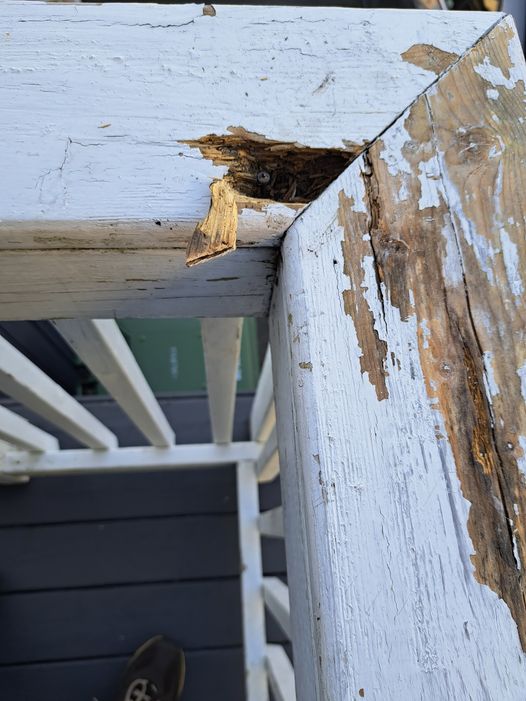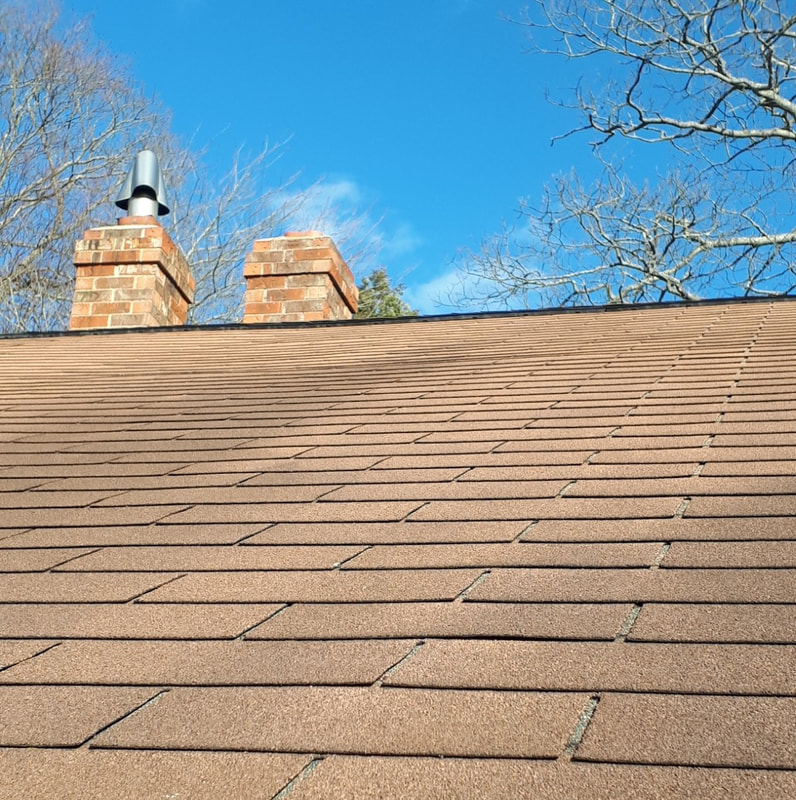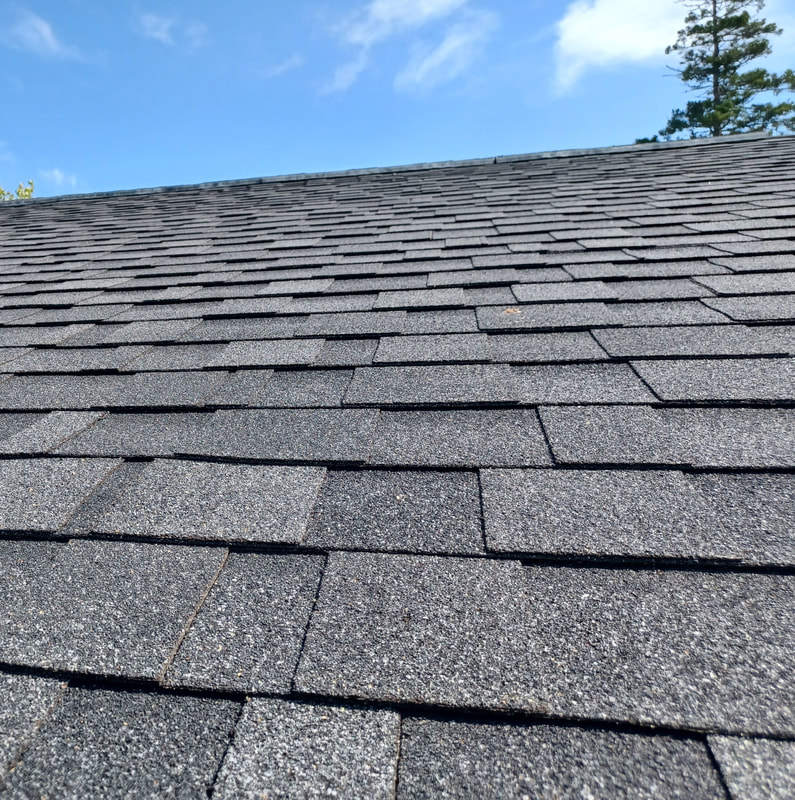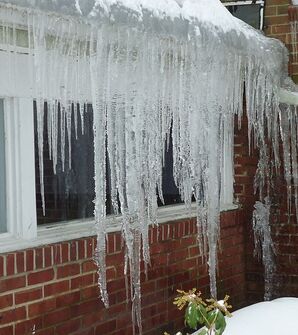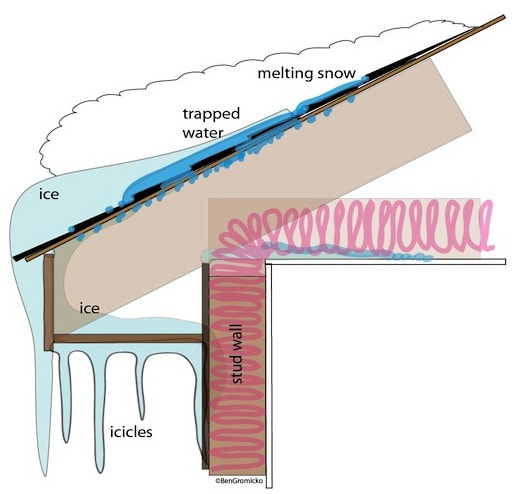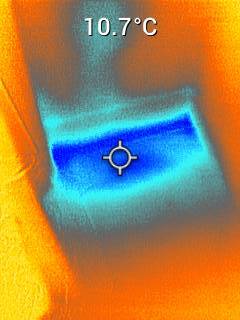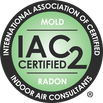Mike's Home Inspector BlogMichael Burfitt |
|
December marks the onset of yet another festive season! As we immerse ourselves in buying gifts, planning holiday gatherings, and cherishing time with loved ones, we also find ourselves in a quieter phase for home inspections – giving us ample opportunity to get into the holiday spirit! In the essence of a beloved Christmas carol, here's the first part of my '12 Days of Christmas' list, tailored for home inspectors: A Partridge in a Safe Tree Ah, the delightful aroma of a Christmas tree: one of my favourite smells of the Holidays! While the scent evokes fond memories, it's essential to ensure safety. Dry trees pose major fire risks, as tragically witnessed in recent incidents in Nova Scotia. Regularly watering the tree is crucial, alongside using indoor-rated lights (modern LEDs are generally versatile for indoor and outdoor use due to their efficiency). Extra caution is needed when young children or pets are around. Two Turtle Doves Nesting The warmth of a fireplace on Christmas morning is unmatched, reminiscent of childhood joy. However, proper control is vital. Scheduling an annual inspection by a qualified technician for both chimney and fireplace is imperative. A cracked firebox, as seen in a recent inspection, can be a significant hazard leading to potential fires. Creosote buildup remains a serious concern and a leading cause of house fires. Compliance with insurance guidelines regarding fireplace use is also essential. Three French Hens’ HVAC Checks Modern HVAC systems offer reliability and comfort but aren't maintenance-free. Regularly changing furnace filters, cleaning HRV/ERV units and bath fans biannually, and ensuring thorough yearly cleaning of dryer vents is crucial. Lint accumulation from clothes is highly flammable, posing fire risks. Beyond functionality checks, inspections identify potential issues that could escalate in the future. Four Calling Birds' Roof Inspection
Roof integrity often determines whether leaks are present or imminent. Late winter/early spring brings a surge in calls about roof leaks. Residential roofs, contrary to common belief, aren't waterproof; they're designed to efficiently shed water. Melting snow, however, poses challenges. Small leaks can persist undetected for months, so regularly peeking into the attic and promptly calling for repairs or replacement when roof shingles blow off is crucial. Stay tuned for part two next week, featuring additional essential home inspection tips! As a professional home inspector, my journey has been shaped not only by my keen eye for detail but also by my proficiency in collecting and analyzing data. This skill, honed through many years of experience, has allowed me to derive valuable information from the reports I generate. In this blog post, I'll delve into how my data-driven approach has transformed my inspections, enabling me to make informed decisions, identify trends, and avoid baseless speculation. Harnessing the Data Advantage In a previous role, I experienced a dramatic reduction in my workload by applying my data analysis knowledge, which also granted me the time to pursue my dream of becoming a home inspector. Armed with the insights I've gained over the years; I now use data to support my instincts and bolster my assessments with hard evidence and facts. This approach allows me to provide more comprehensive and accurate home inspections. Identifying Trends: Examples from the Field Let's take a look at some real-world examples of how data has enhanced my ability to conduct inspections:
By consistently collecting and analyzing data on these aspects, I've gained the ability to quickly assess whether a home's features fall within typical parameters or if there's something unique to investigate further. This approach not only streamlines the inspection process but also motivates me to delve deeper into rarer building materials, expanding my knowledge base. I can use this information to better inform clients on the site during the inspection process. The Limitations of Data While data is a powerful tool in the home inspection arsenal, it's crucial to acknowledge its limitations. Data should not be used as a shortcut to draw conclusions without thorough examination. To illustrate this point, let's consider a non-related example: Imagine a casino game of roulette where a screen displays data on past spins, such as the percentage of spins landing on red versus black. This data may seem helpful but is entirely irrelevant because, in reality, the odds of the ball landing on a specific number in each spin never change. It's a constant probability as each spin of the wheel is independent of the last. Bringing it Back to Home Inspections In the world of home inspections, data can reveal statistical trends. For instance, I can share that 3-tab shingles are statistically more likely to have problems than architectural shingles (almost solely based on the fact 3-tab are generally much older), which, in turn, are more likely than metal roofs to present issues. However, the real world is filled with surprises. I've seen homes with old shingle roofs that exhibited no leaks and, conversely, brand-new roofs with leaks. Ultimately, while my knowledge of statistics and data helps me identify trends and streamline my work, it is no substitute for the hands-on inspection process. Home inspections demand a thorough, physical examination of each property, leaving no room for shortcuts or assumptions. In the realm of home inspections, the fusion of expert observation and data analysis is a powerful combination. It empowers inspectors like yours truly to make informed assessments, identify trends, and offer valuable insights to clients. Yet, it's essential to remember that data alone cannot replace the meticulous, on-site examination required to ensure a comprehensive evaluation of a property. The art of home inspection lies in striking the right balance between data-driven analysis and the hands-on inspection experience.
Wood is a timeless and versatile material that has been used in construction for centuries and is the most common type of residential framing in Nova Scotia by a large margin. From framing to flooring, it brings warmth and beauty to our homes, and nothing beats the smell of wood, at least to this home inspector! However, lurking beneath its appealing surface lies a hidden threat that can compromise the integrity of any structure: rot. It's crucial to understand the damaging effects of rot on wood and the necessity of identifying and addressing it promptly. Wood rot is a natural process caused by fungi that break down the structural components of wood. These fungi thrive in environments with high moisture content and poor ventilation. They feed on the cellulose and lignin within wood, gradually weakening its structural integrity. If left unchecked, rot can spread throughout a building, leading to severe damage, compromised safety, and expensive repairs. Types of Wood Rot There are two primary types of wood rot:
Signs of Wood Rot Detecting wood rot requires a keen eye during home inspections. Look out for the following signs:
Wood rot is a formidable adversary that can compromise the structural integrity and safety of a building. As a home inspector, being knowledgeable about the causes, signs, and impact of wood rot is essential for providing thorough assessments. In the example below, the deck railing was pressure treated (PT) but no treatment was added to the cut area. This lead to moisture infiltration, which is the most essential ingredient to wood rot. Wood rot is a valuable function of nature, allowing dead wood to decompose and form nutrients for new trees to take root and complete the natural cycle. However, the interests of a homeowner is to slow down this process as much as possible by keeping moisture at bay.
As both a home inspector and a semi-nerd, I always like to collect and analyze data. One benefit of this is that I can identify trends and look for anomalies during an inspection. For example, the most common plumbing DWV (drain, waste & vent) system I see is scientifically known as (C8H8·C4H6·C3H3N)n, better known as Acrylonitrile Butadiene Styrene(ABS) which looks like hard, black plastic pipe. Over 95% of the homes I have inspected contain some amount of ABS. It’s not just a plumbing material either: did you know that all Lego blocks are made of ABS? You can see a small bit of this pipe sticking out of the roof on almost all homes when looking from the street, so this statistic doesn’t surprise me. Probably the second most common thing I see is asphalt roofing shingles and like ABS pipe it provides the best combination of quality and value. Again, probably 95% of the homes I inspect use asphalt shingles, although this number will drop in the future as metal roofs are becoming more popular. There are two types of asphalt shingles: organic and fiberglass, with most now using fiberglass as organic shingles were generally not made after 2006 and completely discontinued in 2011. Now let's take a look at the two major types of asphalt shingles for residential roofs: 3-tab and architectural. I have not begun to track shingle style yet but both are common in Nova Scotia. Three Tab Shingles They are so named because they have three tabs on the bottom part of the shingle. They have a flat, uniform design and look like the picture below. The main advantage of 3 tab is that they are lightweight and generally more affordable. Architectural Shingles These can also be known as dimensional shingles and are thicker, being composed of a more random, textural look that can look more like other materials such as slate and have a somewhat 3D shape. Typically these shingles are more durable and last longer but with the disadvantage of a higher initial cost. In my experience, most homes (my own included) now use this type of shingle. It's Not Quite THAT Simple
There are also various grades of shingles available on the market. Unfortunately, determining the grade of shingle is beyond the ability of a home inspector but it is important to note there is no such thing as "bad" shingles. I always like to joke how every company has a "good, better and best" but never "crappy, less crappy and mediocre". In this case, the former is a good representation of the products on the market and a quality installation is far more important to a long lasting, leak free roof. One of the negatives about having relatively mild winters is that we frequently have temperatures around 0 degrees Celsius (or 32 degrees Fahrenheit) and these temperatures can fluctuate between both sides of that number. This can help to form icicles and while as a child it was always fun to break them off, this is a major red flag for home inspectors as no properly constructed home should have them. Icicles are an indicator for one of the main cold weather concerns for home inspector: ice dams. What is an Ice Dam? An ice dam is a problem caused by heat, not cold. It is a ridge of ice that forms at the edge of a roof and prevents melting snow (water) from draining off the roof. Heat escaping from the attic space tends to melt snow, which re-freezes before it is shed from the roof. Contrary to popular belief, sloped residential roofs are generally NOT designed to be waterproof but rather to rapidly and quickly remove water, preferably into a eavestrough and downspout system to be moved away from the home. Snow is a relatively good insulator, so snow will melt close to the roof and remain visible from the outside. Take a look at the picture below for a clearer understanding of how ice dams form. Why is it Such a Concern? You might think: the attic gets a little damp: a well ventilated attic will quickly dry out so what's the problem? The answer is this is simple: water, like nearly everything flows downhill. This means that water will compress and permanently damage attic insulation at first. This will lead to further heat loss through the attic and the formation of even more ice dams and corresponding leaks will increase in frequency. Eventually it will slowly enter the ceiling on the top level (an active leak is rarely obvious at first and before too long can cause major damage to a home). See below an example from a recent inspection where our client was concerned about moisture in the home. The thermal imager shows a very clear anomaly. For my fellow inspectors reading this, you cannot automatically assume this is moisture without further proof: it could just be an area where insulation is missing and this was done on a cold winter's day. My own bathroom shows a similar cold spot but it's from poor insulation in that area not a roof leak. In this case it was obvious from just looking the ceiling was saturated with water and a quick use of a moisture meter confirmed what I already knew. This ceiling will have to be replaced and new drywall installed but the first priority is stopping the leak from happening.
Further investigation shows this particular example was not directly from an ice dam but is the perfect representation of what can easily happen. Remember, moisture is the #1 enemy of homes and an active water leak can seriously damage and even destroy a house! If you are seeing icicles, the first thing you should to is pop that attic hatch, take a look for water infiltration and take appropriate action before water gets into the home. It’s no secret that 2021 was a tough year in the Home Inspection industry, especially in the Halifax area. With the sharp increase in competition for home buyers, many have chosen to waive the inspection contingency when purchasing a home. Needless to say, skipping the home inspection is a B-A-D idea and while not the ideal solution, I do offer walkthrough consultations and strongly encourage post-sale inspections. If you are a first-time homebuyer, it is especially important to know what to expect in the coming years and plan accordingly as homes require a maintenance plan to avoid costly and disruptive issues.
When I was in the planning stages of starting my company and before the COVID-19 pandemic, I wanted to know the reasons why the services of a professional home inspector were not being considered. I found that many people have had bad experiences in the past with home inspectors that were lacking in either technical or communication skills. There is also much misunderstanding amongst new homeowners as to the value of having a home inspection and what exactly a home inspection entails. Here are a few of the more common criticisms I hear and my thoughts on them. Home Inspectors are More Interested in Staying on the Good Side of Agents Ask any inspector and they will deny this conflict of interest, but my experience has shown that this, unfortunately can happen. I have heard other home inspectors openly worry about being labelled a “deal killer” or “alarmist” or otherwise getting on the bad side of an agent or brokerage firm. While I personally am always happy to get positive referrals from anyone, including local agents, the bottom line is that I built our company's reputation as your source for trusted, unbiased and independent home inspections and home related information above all else. Simply put, any real estate agent or organization who expects me to compromise our integrity to push through a deal by writing a "soft" report is looking at the wrong company. Just Hire an Electrician, Plumber, Roofer, and Structural Engineer While some inspectors do occasionally come from these various backgrounds, it is safe to say as a general rule, home inspectors are not electricians, plumbers, roofers or engineers. It is true that collectively hiring from 1 of each of these 4 specialties will indeed yield a more in-depth inspection into arguably the four most important parts of a home. Realistically, it is extremely unlikely to coordinate these four separate trades all at the same time, often with short notice, often on the weekend and at a price that is affordable to the average homeowner. A home inspection is the best value for your money as a good overall introduction or assessment of your home. Home inspectors are both generalists and big picture thinkers and see a home as a system of interdependent components that no specialist can match. I Can’t Trust Nova Scotia Home Inspectors: There Are No Regulations! Stating that Nova Scotia has zero home inspection regulations is 100% true and has been a topic I have written about previously. There has been no shortage of people who have tried their hand unsuccessfully at home inspections both in our province and across North America. Some of these home inspectors have no recognizable qualifications or relevant experience and are masquerading as experts, hurting the overall reputation of our industry. Home Inspectors have one of the highest failure rates of any profession because it quickly becomes apparent, while a fun and rewarding career, that home inspectors do a job that is mentally and physically challenging, requires wearing a wide variety of metaphorical hats and is NOT, in any way, a path to easy money! So how do you know you can trust your inspector to do a great job and provide maximum value? While there is no shortage of trustworthy, thorough, and knowledgeable home inspection companies in our area, I can only speak for my own organization. Inside Edge Home Inspections Ltd. was not an idea I thought up overnight but was the result of over 3 years of careful and meticulous planning. I knew nobody should be expected to pay for someone who still has significant gaps in their knowledge base so that is why I made sure I had an extensive knowledge and experience before launching: as the saying goes you only get one chance to make a first impression and I wanted to make sure our company’s reputation was excellent right from the start. Our website details my extensive background and why I am suited to be considered a highly skilled home inspector, with no need to worry about whether calling Inside Edge is the right decision for you.  Guest Blog Post by Jeff Weickert Trees are a part of nature and in most cases, part of the landscape around homes. Although there are many positive reasons to have trees in your yard, they unfortunately can have negative effects on the building. Here are a few examples of what to watch out for when buying or building a home. Foundation Damage Tree roots are always growing, expanding in the search for nutrients and moisture. Some trees put out a root system three times the height of the tree. When the roots hit a solid barrier such as a foundation, they begin to grow laterally against the solid object. Although the fine roots may find their way into small cracks, the real damage is caused if you have loose soil against your foundation. Tree roots will expand and contract during times of moisture and drought which compromises the integrity of the soil which can cause foundation settling especially in older homes. When concrete settles it is more likely to shift and crack. If you have mature trees you may want to consult a professional to determine if any are of a species that has aggressive root growth such as silver maple, willow or elm. Rather than remove a tree, a root barrier can be installed to alleviate concerns of root interference. Septic System Damage Tree roots are a common cause of septic system damage such as line clogs and backups. In order to gauge the potential for root interference in the septic field, you will have to know where all parts of the system are as well as identify any trees or bushes in the area that could be causing damage. Tree roots are designed to seek out water and leaky pipes are vulnerable to root penetration. The depth of the septic system is also a factor, the deeper the system is buried the less likely you have to worry. Once again, a root barrier can be installed to prevent damage. Roof Damage Leaves and branches pose their own threat to the building from the above ground portion of the tree. Low hanging branches can strip shingles in bad weather leaving your roofing exposed to further damage as well as potential leakage. Heavy branches can break off in a storm and do damage to gutters or the roof itself. Shade provides the ideal condition for moss growth. Moss causes shingles to loosen and break, again compromising the roofs waterproof status. Leaves will accumulate in gutters which eventually overflow. Water flowing down the building’s surfaces will cause damage to wood surfaces (i.e. fascia board) and can potentially find access into the exterior walls. Large, old trees can be a direct hazard to the roof by means of large limb drop and a complete fall of an unhealthy tree which can do enormous damage to a home. The best way to avoid these and other issues is to have your home and grounds inspected by professionals who know exactly what to look for. It will save you time and money in the long run. |
Archives
July 2024
Categories
All
|
|
Inside Edge Home Inspections Ltd.
Halifax, NS 902-209-9921 [email protected] Proudly Serving the HRM & Central Nova Scotia |

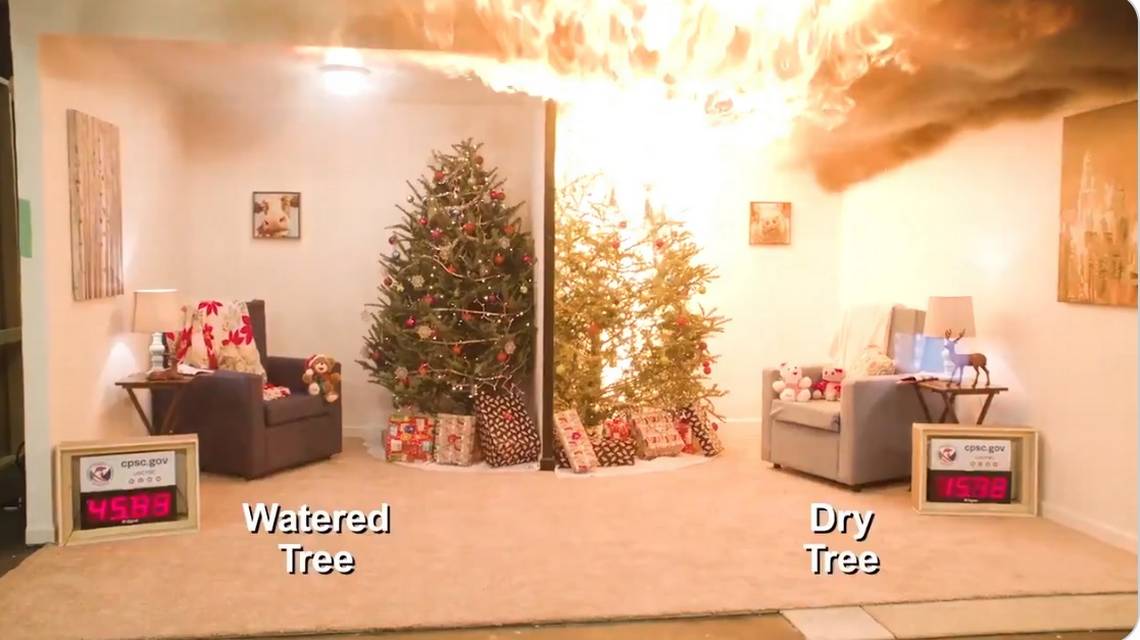
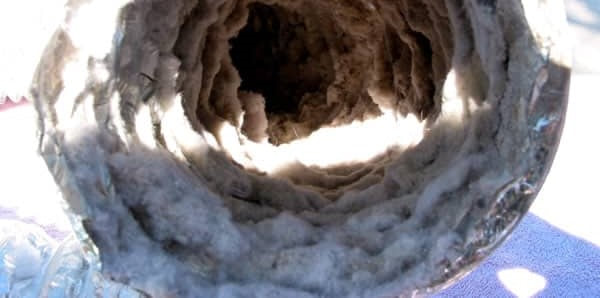
 RSS Feed
RSS Feed 
